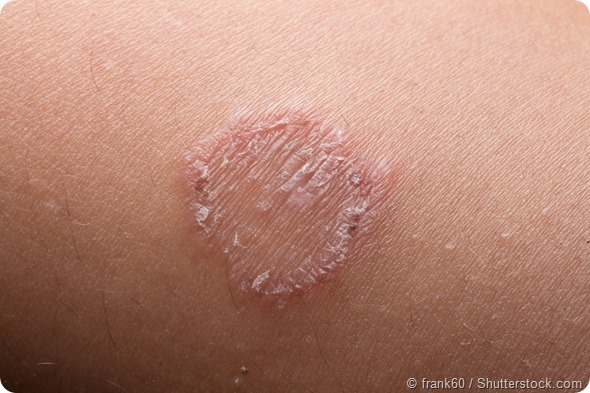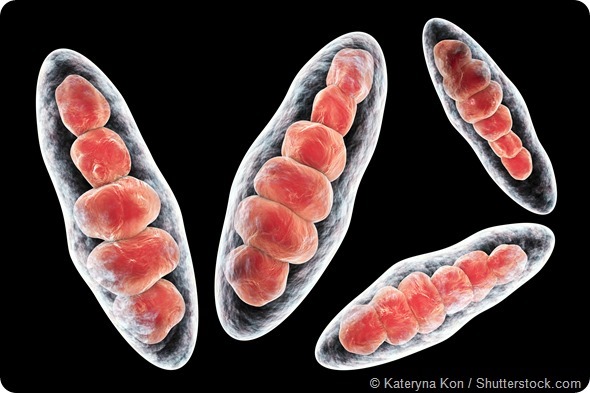For The Latest Medical News, Health News, Research News, COVID-19 News, Pharma News, Glaucoma News, Diabetes News, Herb News, Phytochemical News, Thailand Cannabis News, Cancer News, Doctor News, Thailand Hospital News, Oral Cancer News, Thailand Doctors
Ringworm is a fungal infection of the skin that causes an itchy rash, frequently on the groin or hands. Contrary to its name, it is not caused by a worm. It is caused by one of three species of fungus: trichophyton, microsporum, and epidermophyton. It is highly contagious and can be spread by contact with infected people and animals, and also from spores in the soil.

Ringworm infection, dermatophytosis on skin.
The fungi that cause ringworm are called dermatophytes. They consume keratin, a protein found in the outer layers of skin. Warm, moist skin is an ideal environment for dermatophytes. The infection is very widespread, infecting as much as 20 percent of the population.
Ringworm causes distinctive raised red rings on the skin. Infection of the feet is called athlete's foot and infection of the groin is known as jock itch. The nails may become infected — onychomycosis — causing thickening, discoloration, and loss of the nail. In immunocompromised individuals, ringworm can cause very large lesions, and, rarely, penetrate to deeper layers of skin and internal tissues.
Pets can also be infected with ringworm and transmit the infection to humans.
Good hygiene is important in preventing ringworm. Regular bathing or showering and fresh socks and underwear daily will help prevent the growth of moisture-loving fungus on the groin and feet. Avoid tight clothing like pantyhose and snug underwear. Put socks on before underwear to prevent transfer of fungi from feet to groin.
Since fungus thrives on moisture, dry off completely after a shower, allowing skin to air dry before putting clothes on. A hair dryer on a cool setting can be used to dry skin. When using a towel, dry feet last. Clip finger and toe nails and keep clean. Clothing exposed to ringworm should be washed in hot water with a fungicidal soap.
Shower after any sport that requires skin-to-skin contact. Use slippers, sandals, or shower shoes in locker rooms and public showers. Disinfect exercise machines.
Don't share items that can transmit a fungal infection.
Pets showing symptoms such as hair loss should be examined by a veterinarian. If your pet has ringworm, wear gloves while handling it. Surfaces and pet bedding can be disinfected.
In humans, ringworm infections are known as tinea, and named specifically by the area of the body affected. The different types of possible tinea infections are:

A 3D illustration of Trichophyton mentagropytes - the microscopic fungus that causes athlete's foot (Tinea pedis) and scalp ringworm (Tinea capitus).
In the case of an active ringworm infection, topical medications like miconazole, terbinafine, ketoconazole, clotriminazole, and tolnaftate can be used for two or three weeks to treat the infection. Scalp ringworm is sometimes treated with oral medications.
In pets, the same types of medications can be used. Hair around the lesion should be trimmed, and household surfaces and bedding thoroughly cleaned and vacuumed.
The lesions should not be touched, to prevent spreading the infection.
Sources